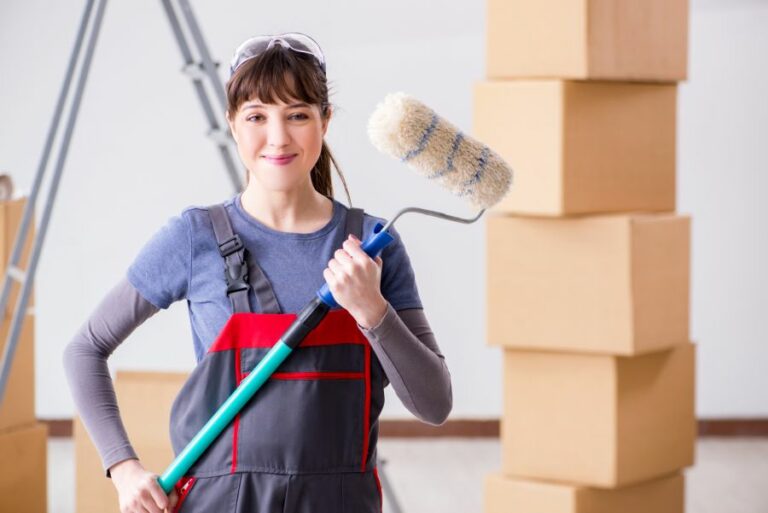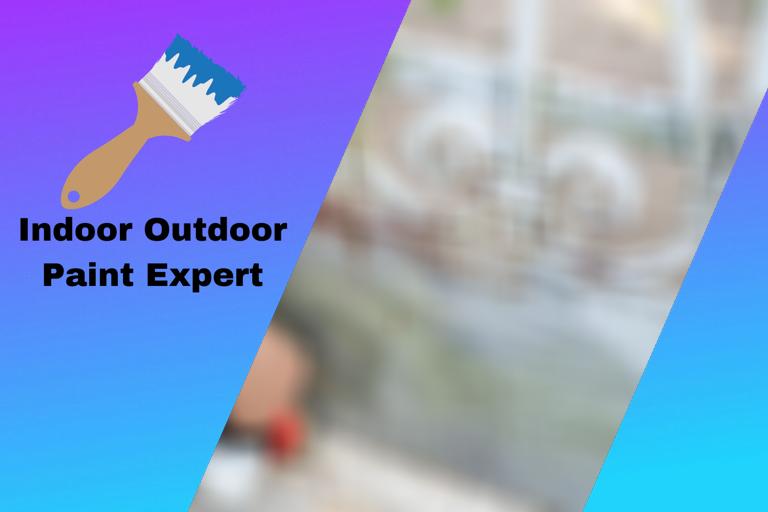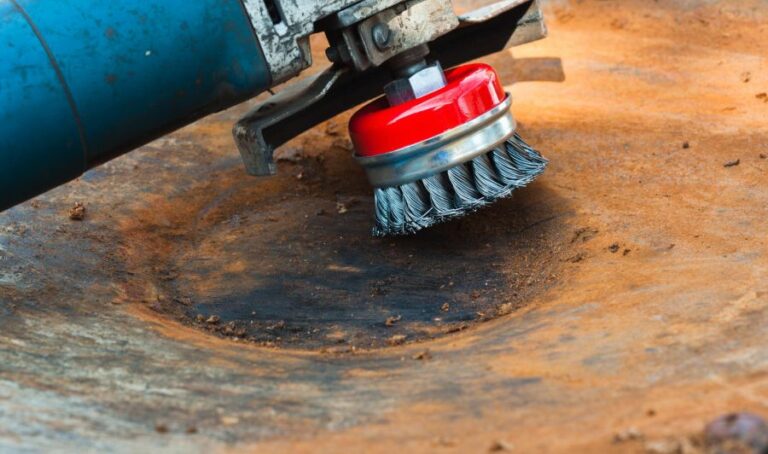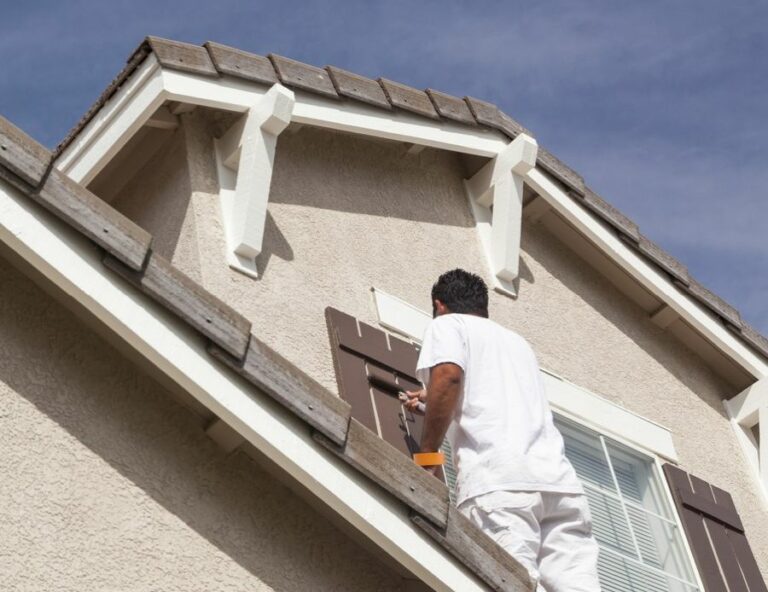Preventing Moisture Damage During Surface Preparation
Pr* eventing moisture damage during surface preparation is a crucial aspect of ensuring the longevity and durability of the materials and structures you’re working with. You can rest assured that we have the knowledge and expertise to guide you through this process. Let’s dive into the key factors and strategies that will help to effectively mitigate the negative effects of excess moisture, creating a solid foundation for your project’s success.
Preventing moisture damage during surface preparation:
To prevent moisture damage during surface preparation, ensure proper cleaning, removal of old coatings, and address surface irregularities. Inspect for moisture damage, identify and address moisture sources, test for moisture content, choose appropriate treatments, allow surfaces to dry before application, and regularly monitor and maintain moisture control measures. Employ best practices and consult professionals for complex moisture issues.

Don’t let moisture damage hinder your surface preparation project! Dive deeper into our guide as we uncover crucial steps and practical tips to prevent moisture-related issues effectively. Keep reading for expert advice, tested methods, and secrets to achieving impeccable results.
Contents
- 1 Avoiding Moisture-Related Damage in Surface Preparation
- 2 Ensure Moisture Damage Prevention: Techniques and Tips
- 3 Effective Methods to Keep Buildings Moisture-Free
- 4 Top Moisture-Resistant Materials for Construction
- 5 Concrete Coatings for Enhanced Moisture Evaporation Prevention
Avoiding Moisture-Related Damage in Surface Preparation
• Understanding Moisture Damage
Moisture damage occurs when water penetrates materials, leading to various problems like mold, mildew, and material deterioration. It can happen in various environments, including homes, commercial buildings, and industrial facilities.
Surface preparation is a critical stage in preventing moisture damage, as it ensures that the substrate is ready for the application of protective coatings, sealants, or other treatments. Understanding moisture-related issues and taking necessary precautions during surface preparation can prevent costly repairs and health hazards.
– Sources of Moisture
Moisture can enter structures from various sources, such as:
- Groundwater and soil moisture: Water accumulating beneath the structure can lead to hydrostatic pressure, causing water ingress and damage.
- Rain and runoff: Water ingress can occur through leaks, poor drainage systems, and inadequate waterproofing.
- Condensation: Moisture-laden air can condense on cool surfaces, resulting in dampness.
- Humidity: High humidity can cause excessive moisture content in materials, promoting mold and mildew growth.
- Water leakage: Plumbing leaks, defective water supply systems, and other internal water sources can lead to moisture penetration.
• Importance of Surface Preparation
Proper surface preparation is crucial for preventing moisture damage, as it ensures that the substrate is ready to receive protective coatings, sealants, or other treatments. It involves activities like cleaning, removing old coatings, and addressing surface irregularities.
By carefully assessing and addressing moisture-related risks during surface preparation, you can significantly prevent moisture damage and prolong the life of your surfaces.
– Steps for Effective Surface Preparation
Follow these steps to effectively prevent moisture damage during surface preparation:
- Remove existing coatings, dust, and debris: Clean the surface thoroughly using appropriate cleaning agents, brushes, or pressure washers. Removing existing coatings is essential to ensure the adhesion of new coatings and treatments.
- Inspect for moisture damage, mold, and mildew: Check the surface for signs of water ingress, stained or discolored areas, mold growth, and mildew. Addressing these issues before applying coatings or treatments is crucial to prevent further damage.
- Identify and address moisture sources: Determine the causes of moisture ingress, such as leaks, condensation, or humidity, and address them to rectify the problem.
- Test for moisture content: Use moisture meters or other testing methods to determine the moisture content of the surface. This information is crucial for selecting appropriate coatings, sealants, or treatments.
- Choose appropriate surface treatments: Select moisture-resistant products or treatments that are compatible with the surface material and specific moisture-related issues in your environment. These may include waterproof coatings, moisture barriers, or vapor-permeable materials, depending on the situation.
- Allow surfaces to dry before applying treatments: Ensure that the surface is dry and free from any residual moisture before applying coatings, sealants, or treatments, as moisture can compromise the performance and adhesion of these products.
- Monitor and maintain moisture control measures: Regularly inspect and maintain surfaces and moisture control measures to ensure their effectiveness in preventing moisture ingress and damage.
– Expert Recommendations
Based on experience, I recommend the following best practices to prevent moisture damage during surface preparation:
- Always use appropriate personal protective equipment (PPE) when handling chemicals, cleaning agents, and equipment.
- Employ techniques like damp proofing or vapor barrier installation to protect surfaces from moisture in high-risk areas.
- Choose moisture-resistant coatings, sealants, or treatments that are suitable for the specific surface material and environmental conditions.
- If necessary, consult with moisture control professionals or engineers to address complex moisture issues and provide tailored solutions.
• Conclusion
Preventing moisture damage during surface preparation is an essential step in protecting the structural integrity, appearance, and functionality of built environments.
By following best practices, addressing moisture sources, and choosing appropriate treatments, you can effectively minimize the risks of moisture damage and ensure long-lasting surfaces.
Ensure Moisture Damage Prevention: Techniques and Tips
Moisture damage is a common issue faced by homeowners and business owners alike. Whether caused by leaks, condensation, or poor ventilation, excess moisture can lead to various forms of property damage, such as mold growth, wood rot, and weakened building materials.
• Identifying the Sources of Moisture
The first step in preventing moisture damage is to identify potential sources of moisture so that appropriate measures can be taken to address each issue.
– Plumbing Leaks
Pipes, faucets, and hoses should be regularly inspected for signs of leaking or dripping. Regular maintenance checks can help prevent small leaks from turning into major problems, resulting in costly repairs and potential health risks.
– Humidity and Condensation
The relative humidity inside your property should ideally be kept between 30-50% to prevent the formation of condensation on cold surfaces. Monitor humidity levels using a hygrometer, and take corrective action if necessary.
Condensation can be reduced by improving ventilation, insulating cold surfaces, and using a dehumidifier if needed.
– Roof Leaks
A leaking roof can cause serious damage to your property, including structural deterioration and mold growth. Regularly inspect your roof for signs of damage or wear, and repair any issues promptly to prevent moisture problems from developing.
– Groundwater and Surface Water
Proper drainage and waterproofing measures should be in place to prevent water from entering your property’s foundation. This includes good gutter maintenance, grading the ground away from your property, and installing a sump pump if necessary.
• Implementing Effective Ventilation Strategies
Proper ventilation is crucial to maintaining a healthy indoor environment and preventing moisture-related issues. Make sure your property has adequate ventilation in key areas.
– Bathrooms
Bathrooms are a common source of moisture due to the steam generated by hot showers and baths. Ensure your bathroom is equipped with an exhaust fan that vents moisture to the outside. If possible, keep windows and doors open after use to promote air circulation.
– Kitchens
Kitchens also generate a significant amount of moisture through cooking activities. Make use of exhaust fans or range hoods that vent to the outside, and if possible, open windows while cooking to promote proper ventilation.
– Laundry Rooms
Clothes dryers produce a considerable amount of moisture, which can lead to mold growth if not adequately ventilated. It is essential to vent your dryer to the outside, and not into the attic or crawl space, to avoid creating moisture problems.
– Attic and Crawl Spaces
Inadequate ventilation in attics and crawl spaces can lead to moisture build-up, causing mold and decay in these areas. Ensure there is proper ventilation through soffit vents, ridge vents, or gable vents, depending on your property’s design.
• Proper Insulation
Having sufficient insulation not only helps reduce the energy costs of your property, but it can also prevent moisture damage. Properly insulating cold surfaces, like exterior walls, can help prevent condensation from forming.
• Protecting Building Materials
Certain building materials are more prone to moisture damage than others. Take preventive measures to ensure these materials remain protected.
– Use Mold-Resistant Materials
When constructing or renovating your property, consider using mold-resistant building materials such as mold-resistant drywall, paint, and caulks. These materials can provide a protective barrier against mold growth.
– Waterproof Basements and Crawl Spaces
Having a damp basement or crawl space can lead to serious moisture problems. Keep these areas dry by installing a vapor barrier and insulating the walls, floor, and ceiling. In addition, consider installing a sump pump and dehumidifier if necessary.
• Regular Maintenance
Regular maintenance of your property will not only help detect issues before they escalate but also ensure that appropriate measures are in place to prevent moisture damage.
– Gutter Cleaning
Clogged gutters can cause water to overflow and accumulate around the foundation of your property, potentially resulting in damage. Schedule regular gutter cleaning to ensure rainwater is properly directed away from your property.
– HVAC System
Ensure that your HVAC system is well-maintained, as some air conditioning units can produce excess moisture if not properly functioning. Schedule annual maintenance appointments to improve your system’s efficiency and identify potential problems.
– Regular Inspections
Conduct routine inspections of your property to identify potential moisture issues and address them promptly. This includes checking roofs, walls, windows, and foundations for signs of damage and taking necessary corrective measures.
By implementing these strategies, you can effectively prevent moisture damage and maintain the integrity of your property.
For more information, visit the U.S. Environmental Protection Agency for their guidelines on moisture control, and consult a professional if you suspect your property has moisture-related issues that require expert attention.
| How can moisture damage be prevented? | |
|---|---|
| 1 | Proper ventilation |
| 2 | Maintaining appropriate humidity levels |
| 3 | Regular inspection for leaks and water damage |
| 4 | Keeping gutters and drainage systems clear |
| 5 | Using moisture-resistant building materials |
| 6 | Sealing and insulating your home |
| 7 | Addressing water leaks and dampness immediately |
| 8 | Maintaining appliances that produce moisture properly |
Effective Methods to Keep Buildings Moisture-Free
Moisture is a primary cause of many building problems, such as mold, mildew, and damage to materials. It’s essential to prevent moisture from entering a building to ensure its longevity and maintain a healthy environment for its occupants.
• Understanding Moisture Sources
The first step in preventing moisture from entering a building is understanding the various sources of moisture. These sources can be categorized into three general categories: external, internal, and construction-related sources.
– External Sources
External sources include rainwater, groundwater, and surface water. To manage these sources, consider the following strategies:
- Proper Drainage: Install a well-designed drainage system to divert water away from building foundations. This includes gutters, downspouts, and sloping of the ground away from the building.
- Waterproofing: Waterproof exterior walls and foundations using appropriate materials, such as bituminous coatings, cementitious waterproofing, and liquid-applied membranes.
- Vapor Barriers: Install a vapor barrier, typically plastic sheeting, on the exterior side of the insulation to limit moisture diffusion from the outside.
– Internal Sources
Internal sources comprise activities and processes occurring within a building that generates moisture, such as cooking, bathing, and breathing. To mitigate these sources, consider implementing the following strategies:
- Ventilation: Ensure proper ventilation in areas with high moisture generation, like kitchens and bathrooms. Exhaust fans and vented range hoods can help remove moisture from these areas.
- Dehumidifiers: Use dehumidifiers in spaces with high humidity levels to maintain indoor relative humidity below 60%, a general threshold recommended for preventing mold growth.
- Air Sealing: Seal air leaks within the building envelope to limit humidity migration from spaces with high moisture levels to other spaces.
– Construction-Related Sources
Construction-related sources of moisture include wet building materials, condensation during construction, and moisture trapped within building components. Address these sources with the following strategies:
- Drying Materials: Allow wet building materials, like concrete and plaster, to dry adequately before enclosing them within the building envelope.
- Moisture Barriers: Install moisture barriers, such as polyethylene sheets or breathable house wraps, to limit the amount of moisture entering the building during construction.
- Proper Insulation: Insulate walls, floors, and ceilings to reduce condensation on cold surfaces inside the building.
• Moisture-Resistant Building Materials
Selecting moisture-resistant materials when constructing a building is essential in preventing moisture ingress. The following materials can help resist moisture:
- Masonry: Brick, stone, and concrete blocks are highly resistant to moisture penetration.
- Cement-Based Materials: Cement boards and cementitious siding are durable and resistant to moisture.
- Metal and Plastic Materials: These materials are inherently resistant to moisture and mold growth.
Visit the National Institute of Building Sciences’ Whole Building Design Guide for further information on selecting moisture-resistant building materials.
• Monitoring and Maintenance
Continuous monitoring and maintenance of building components are crucial in preventing moisture ingress. Implement the following measures to ensure moisture prevention:
- Inspect Roofing: Regularly inspect the roof for signs of damage, such as leaks or water stains. Promptly repair any defects discovered.
- Maintain Drainage Systems: Periodically clean gutters and downspouts to ensure proper water flow. Additionally, ensure that the ground slopes away from the building to divert water.
- Check Seals and Joints: Inspect seals and joints around doors, windows, and plumbing fixtures for signs of damage or deterioration. Repair or replace damaged sealing materials as necessary.
- Monitor Indoor Humidity: Use a hygrometer to measure indoor relative humidity. If needed, adjust heating and cooling systems, ventilation, or dehumidifiers to maintain appropriate humidity levels.
In conclusion, preventing moisture from entering a building requires a multifaceted approach considering various sources of moisture, appropriate building materials, and regular monitoring and maintenance.
Implementing these strategies and recommendations can help ensure a durable and healthy building environment for occupants.
| How do you prevent moisture from entering a building? | |
|---|---|
| 1. | Install a vapor barrier to block moisture from seeping into the walls and floors. |
| 2. | Properly seal doors and windows to prevent drafts and water leaks. |
| 3. | Ensure proper roof drainage, such as installing gutters and downspouts to direct water away from the building. |
| 4. | Grade the landscape around the building so that water flows away from the structure. |
| 5. | Use moisture-resistant building materials, like treated wood or mold-resistant drywall. |
| 6. | Maintain proper indoor humidity levels through the use of ventilation, dehumidifiers, or air conditioning. |
| 7. | Regularly inspect and maintain plumbing and appliances to prevent water leaks. |
Top Moisture-Resistant Materials for Construction
Moisture is a common issue in many buildings and homes. If left unchecked, it can cause various problems, including odors, mold growth, structural damage, and even health issues for inhabitants.
• Waterproof and Moisture-Resistant Materials
A significant step in preventing moisture is using materials that resist water infiltration and absorption. These materials not only reduce moisture-related issues but also provide long-lasting performance.
– Concrete
One of the most widely used building materials, concrete provides excellent moisture resistance. Its dense structure slows the passage of water and vapors, making it ideal for foundations, basements, and walls.
To further prevent moisture, concrete can be coated or sealed with a waterproofing membrane, such as bituminous or cementitious products.
– Vapor Barriers
Vapor barriers are sheets of plastic or other materials that resist the passage of moisture. They are typically installed between the insulation and the interior surface of a wall, floor, or ceiling to prevent humidity from migrating into the building envelope.
Some common materials used as vapor barriers are polyethylene, polyamide, and aluminum foil.
– Moisture-Resistant Drywall
Regular drywall or gypsum board is an economical option, but it can weaken or develop mold when exposed to moisture.
Moisture-resistant drywall, also called greenboard, is reinforced with water-resistant additives and is an excellent option for damp areas, such as bathrooms, laundry rooms, and basements.
– Cement Board
Cement board, also known as backer board or tile backer, is a moisture-resistant material commonly used as a substrate for tile installation in wet areas like showers, kitchens, and bathrooms. Cement board is composed of cement and glass fibers, making it resistant to water penetration and mold growth.
– Impervious Flooring
Some flooring materials are better at preventing moisture than others. Vinyl, ceramic, and porcelain tiles are impervious to water absorption and can be installed in wet areas.
Additionally, waterproof vinyl flooring like luxury vinyl plank (LVP) and luxury vinyl tile (LVT) can provide the look of wood or stone without the risk of moisture-related issues.
• Effective Moisture Control Strategies
Besides using moisture-resistant materials, it’s essential to implement effective moisture control strategies to ensure a healthy environment. Here are some recommendations to consider:
– Proper Ventilation
Ensuring adequate ventilation helps maintain indoor air quality and reduce humidity levels. Exhaust fans and vents should be installed in moisture-prone areas, such as bathrooms, kitchens, and laundry rooms, to help remove moisture-laden air.
– Dehumidifiers
Dehumidifiers can help maintain relative humidity levels in damp spaces, such as basements or crawlspaces. These devices work by extracting moisture from the air and collecting it as water or pumping it outdoors.
– Proper Insulation
Installing proper insulation in walls, floors, and ceilings helps prevent condensation that can lead to moisture issues. Both insulation materials and vapor barriers can play a vital role in maintaining indoor comfort and preventing moisture infiltration.
– Sloping and Drainage
Proper grading around a building’s foundation helps direct water away from the structure. This can prevent water from seeping into basements and crawlspaces. Installing gutters and downspouts can also efficiently channel rainwater away from the building.
• Conclusion
In conclusion, moisture prevention is a critical aspect of building maintenance and construction.
By using moisture-resistant materials such as concrete, vapor barriers, moisture-resistant drywall, cement boards, and impervious flooring, along with implementing effective moisture control strategies like proper ventilation, dehumidifiers, insulation, and drainage, one can create a healthy and moisture-free environment.
Material | Description |
|---|---|
Waterproof Membranes | Thin layers of watertight material that can be applied to surfaces to prevent water penetration. |
Vapor Barriers | Materials designed to restrict the passage of water vapor through walls, ceilings or floors. |
Sealants | Substances used to block the passage of water and moisture through small openings or gaps. |
Hydrophobic Coatings | Coating materials that repel water and create a barrier to moisture intrusion. |
Insulation Materials | Materials that can be used to slow heat transfer and reduce condensation, such as fiberglass or foam insulation. |
Concrete Coatings for Enhanced Moisture Evaporation Prevention
Concrete, as a versatile and robust building material, has become an integral part of contemporary construction projects. While concrete offers numerous advantages, including strength and durability, it is not without challenges.
One such challenge is preventing the evaporation of moisture, which can adversely impact the curing process and overall performance of the concrete. As a solution, coatings have been developed to overcome this challenge.
• A Look at the Curing Process and Evaporation
The curing process of concrete is a critical phase that ensures the material achieves its optimal strength, density, and durability.
During this process, it is essential to maintain proper hydration and prevent rapid moisture evaporation. The evaporation of moisture from the concrete surface can cause several issues, including:
- Weak and porous concrete
- Shrinkage and cracking
- Reduced durability and longevity
- Surface defects
Understanding the importance of moisture retention in the curing process can help underscore the necessity of a specially formulated concrete surface coating.
• The Role of Coatings in Moisture Retention
Specialized concrete coatings, often referred to as curing compounds or curing agents, are specifically designed to mitigate moisture evaporation from the surface. These coatings form protective barriers on the concrete surface, locking in the necessary moisture to facilitate proper hydration and curing.
There are various types of coatings available, each with its unique characteristics and benefits. Below are some examples of popular coating options for concrete surfaces.
– Acrylic Coatings
Acrylic-based coatings are widely used due to their cost-efficiency and ease of application. These coatings typically consist of water-based acrylic resins that create a transparent, flexible film on the concrete surface.
This film is resistant to UV rays and weathering and allows for vapor transmission while effectively preventing moisture loss during the curing process.
– Wax-Based Coatings
Wax-based curing compounds form a protective layer on the concrete surface that significantly reduces the rate of moisture evaporation. These coatings consist of hydrocarbon resins and paraffin wax and are typically applied at a lower cost compared to other coating options.
However, they can become brittle over time and may be removed before applying any additional surface treatments.
– Ethylene Glycol-Based Coatings
These coatings offer excellent moisture retention properties, making them a suitable choice for environments with high wind exposure or rapid drying conditions.
The key component in this type of coating is ethylene glycol, which forms a durable and long-lasting barrier on the concrete surface, effectively locking in moisture and preventing evaporation.
– Silicate-Based Coatings
Silicate-based curing compounds utilize sodium or potassium silicates as the primary ingredient. These coatings react with the free lime present in the concrete to produce a dense, insoluble gel that seals the surface and keeps it moist throughout the curing process.
These coatings are chemically resistant, bond well with the concrete, and offer a long-lasting solution for moisture retention.
• Application of Coatings for Optimal Results
To ensure the effectiveness of a concrete surface coating in preventing moisture evaporation, proper application is essential. Here are some recommendations based on experience:
- Select the appropriate coating based on the type of concrete, environmental conditions, and desired properties.
- Follow manufacturer guidelines regarding the ideal application rate and drying time.
- Consider the use of a sprayer or roller for even, consistent coverage.
- Reapply the coating if it becomes damaged, excessively worn, or otherwise compromised.
• Environmental and Safety Concerns
Some coatings may contain volatile organic compounds (VOCs) or other chemicals that can pose environmental or health concerns.
As such, it is essential to select an eco-friendly, low-VOC coating when possible. Additionally, proper handling, storage, and disposal of these products must be a priority to ensure the safety of the environment as well as workers on the job site.
For more information on concrete coatings and their role in preventing moisture evaporation, the Portland Cement Association provides valuable resources on concrete curing and related topics.
Coating Type | Description |
|---|---|
Concrete Curing Compound | A coating applied to the concrete surface to reduce the rate of evaporation of water and to help in proper curing and hardening of the concrete. |







